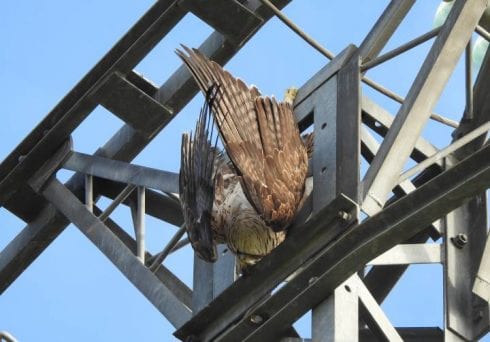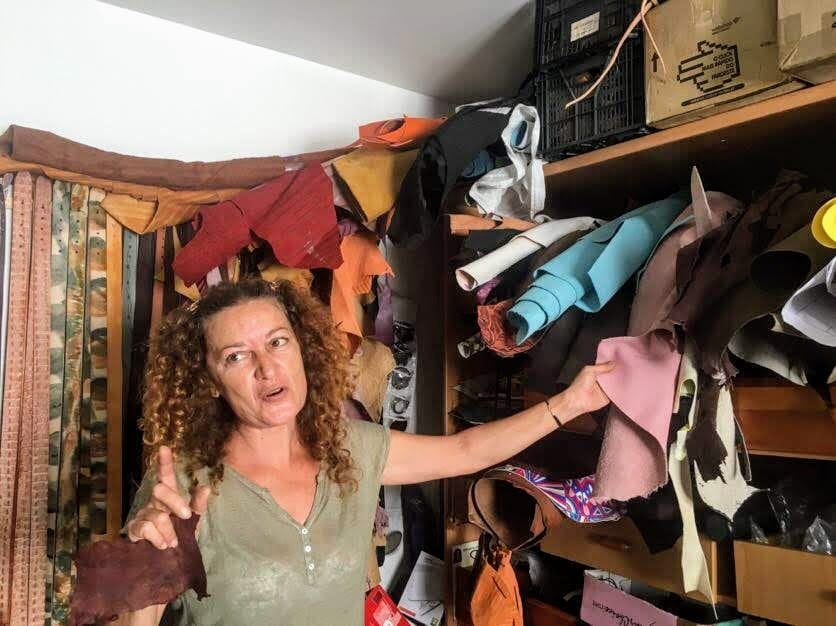
LUPE’S smile is wide and toothy.
Her copper hair floats around her face in frizzy curls, escaping from the clips attempting to pin it back.
She stands at the entrance to her workshop, a small nook in her home in San Fernando, a residential area on the outskirts of the city of Cádiz.
Inside is organised chaos. Tools hang out of kitchen catchalls; a Nesquik tin holds scissors, pliers, and other metal instruments. Beads are stored in an old plastic tub marked ‘Ensaladilla’ in bright block letters. A honey-coloured binding substance oozes out of a jam jar whose gingham red topper is stubbly with dried wax.
It is here, at this long wooden desk, that Lupe clocks up to 70 hours of work a week designing and carefully constructing artisan leather goods.
A native gaditana who studied fashion design at Cadiz Art School, Lupe partnered with Fran, a former cook with a knack for belt design, to found Mittica. The brand, offering one-of-a-kind designs through innovative techniques and a commitment to Spanish leather artisanship, is her second venture and just under five years old. While Mittica is sold in limited quantities online through Amazon Handmade, Fran and Manuel (Lolo), also sell Lupe’s products in the open-air market bordering the Port of Cadiz.
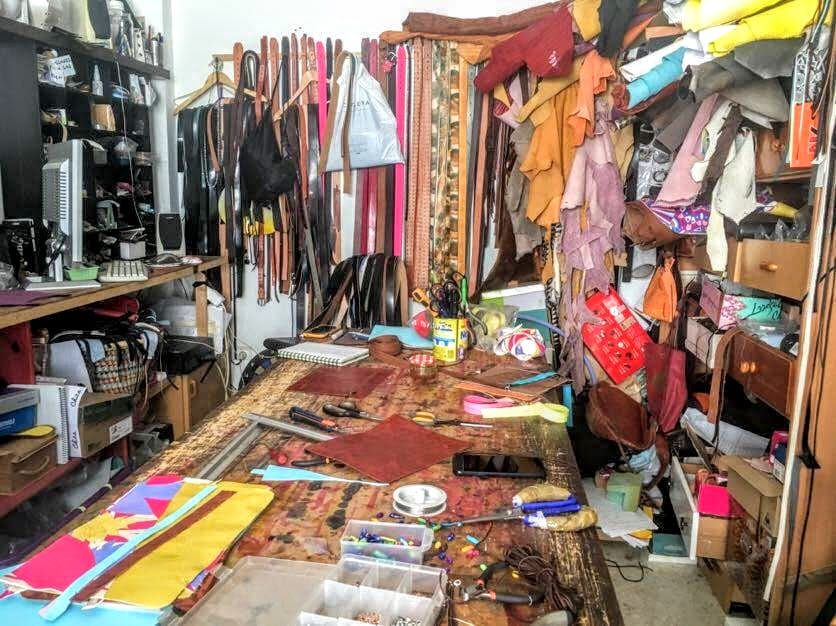
Lupe has been working with leather for 10 years, but her entrepreneurial spirit and search for unique design has been innate since childhood.
She recounts scouring the train tracks near her house for pieces of lead seal that she would melt down in a kitchen pot, fashioning rudimentary necklaces out of the unpredictable shapes they cooled into.
Today, she has found a new creative outlet in the form of discovering, collecting, and transforming recycled materials into the bags her brand has become known for.
Using a variety of leather – ostrich, cow, bull, veal, toadskin – Lupe crafts bags, belts, bracelets, and necklaces. Although she enjoys seeking out unique market trinkets and remaking discarded finds, her leather is primarily sourced from Ubrique, a small pueblo blanco hidden in the Sierra de Cádiz.
The town’s high-quality goods, however, are not quite a secret. According to the BBC, Ubrique also serves as a supplier to some of the world’s biggest luxury brands, including Louis Vuitton, Carolina Herrera, Gucci, Hermes, and Chanel, to name a few. Newer brands such as Everlane and Belcori, whose self-described mode of production is ‘eco-luxury’, also partner with factories in Ubrique for their products.
Back in Lupe’s studio, each piece is assembled with practised, calloused fingers. Littered around her are bags ranging from traditional mahogany and black to those patterned with psychedelic pinks, blues, and purples. One of Lupe’s most stunning pieces is a structured handbag that unfolds and flattens easily, made to be conveniently stored in any suitcase.
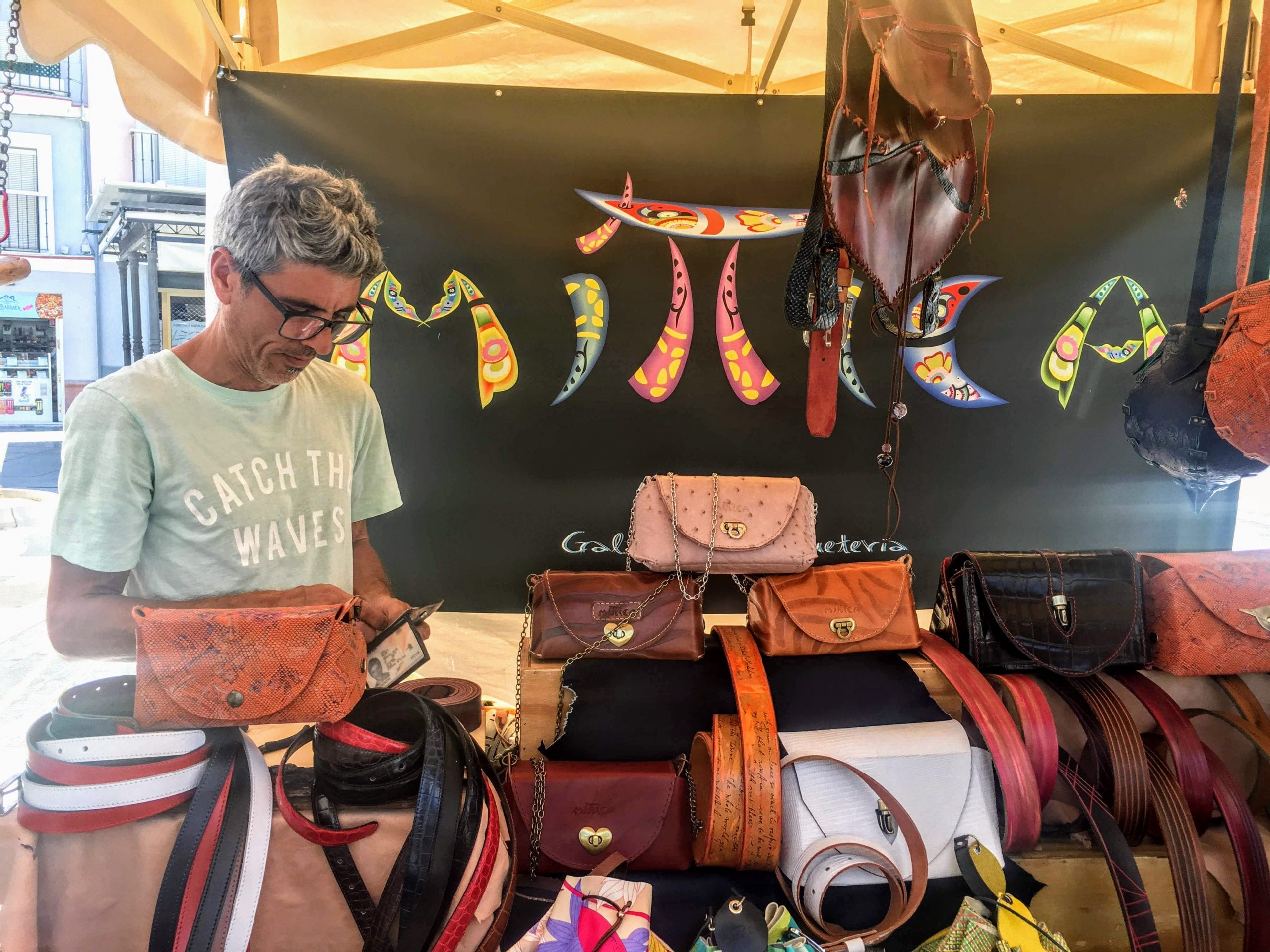
Lupe employs a variety of techniques with each piece and is constantly experimenting with new ones. Entirely self-taught, she has refined her craft over the years by consulting the Internet for guidance and inspiration. Her printing and dyeing techniques range from Turkish ebru to transfer and sublimation.
“I’ve always wanted to make things that are different and that go above and beyond just the straightforward design,” she says. “I’ve always had an itch to make things.”
However, perfecting her creative passion and turning it into a viable business present very different challenges.
Ubrique also serves as a supplier to some of the world’s biggest luxury brands, including Louis Vuitton, Carolina Herrera, Gucci, Hermes, and Chanel
The Mercado de Cruceros on Plaza San Juan de Dios, bookended by palm trees and the city’s emblematic town hall, is the first glimpse of Cadiz cruise-goers get after stepping off the ship. Dozens of white-topped stalls present a selection of local artisan goods, the appetiser to the main gaditano meal.
This welcome to the city, perfectly curated to seize the opportunity presented by the transient tourist traffic, makes earning a coveted spot in the market key to many vendors.
As of January 2018, 23 stalls were granted a license to sell here — 18 along the main promenade and five to the right of the plaza.
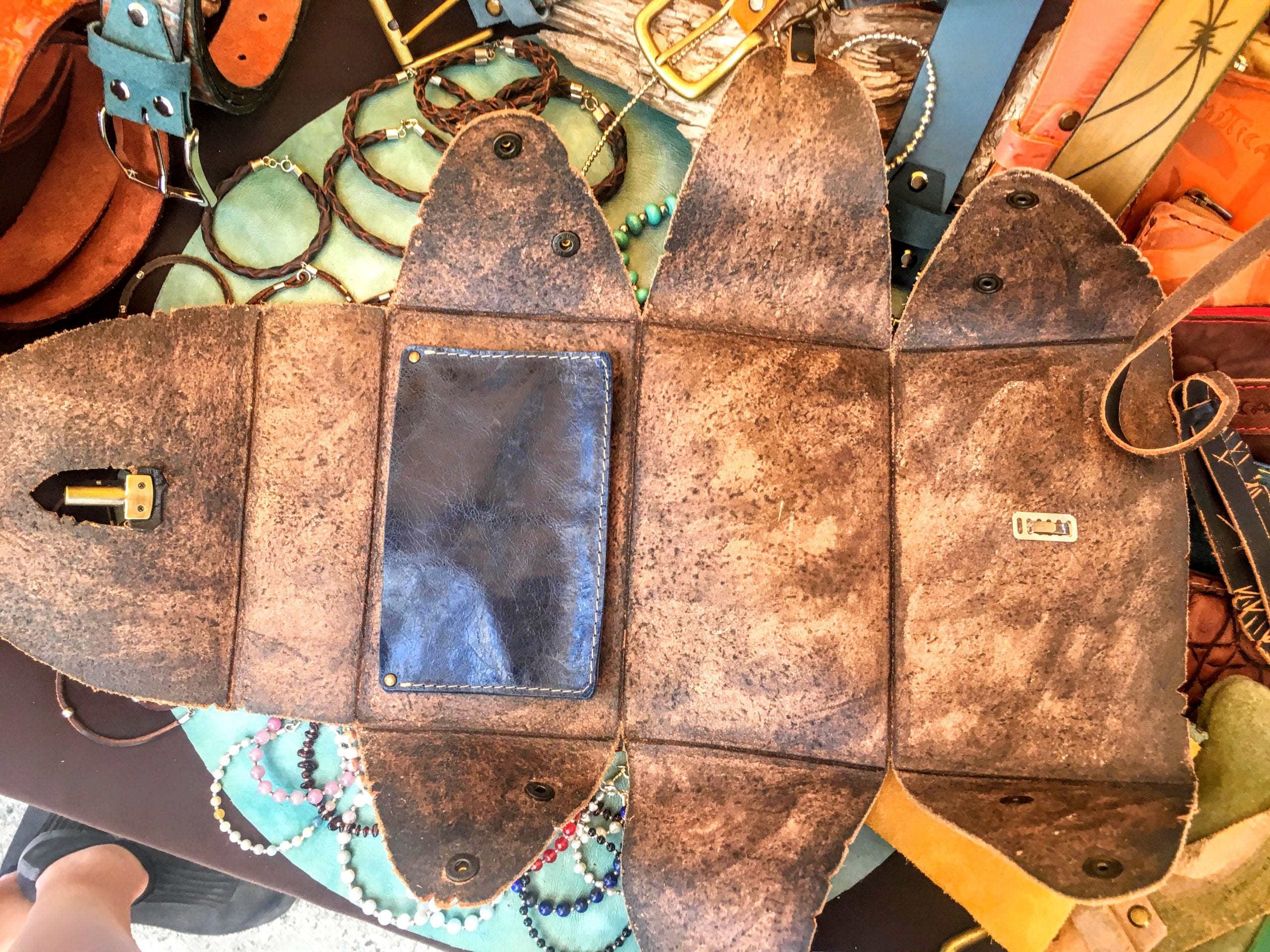
According to Ana Fernandez, Councilor for Presidency and Social Affairs at the time, the rapid growth of the market since its establishment two years prior pushed the government to extend vendorship licenses, making them bi-annual rather than annual.
The intention was to encourage vendors to return by providing them with stable placement for their business while allowing the government enough time to ensure vendors fulfilled the demands necessary to sell their products.
But there’s reams of red tape. The bureaucratic application process includes a one-page form asking for information regarding the business and its owner, as well as 10 supporting documents ranging from verification of the artisan to identification of the articles offered and the production process.
Once approved, the owner and each employee must complete an Occupational Risk Prevention course that costs over €100 each time it is taken. The course, Lupe explains, seems to be targeted towards larger firms that work with factories, as the questions often test biochemical knowledge that Lupe and her employees never needed to learn for their line of work.
‘I think the government should adapt those courses to meet the necessities and capabilities of the self-employed. Or at least not make them so difficult, because we have enough work to worry about as it is,’ Lupe says.
Other changes enacted by the town hall regarding vendor requisites have also not been well-received.
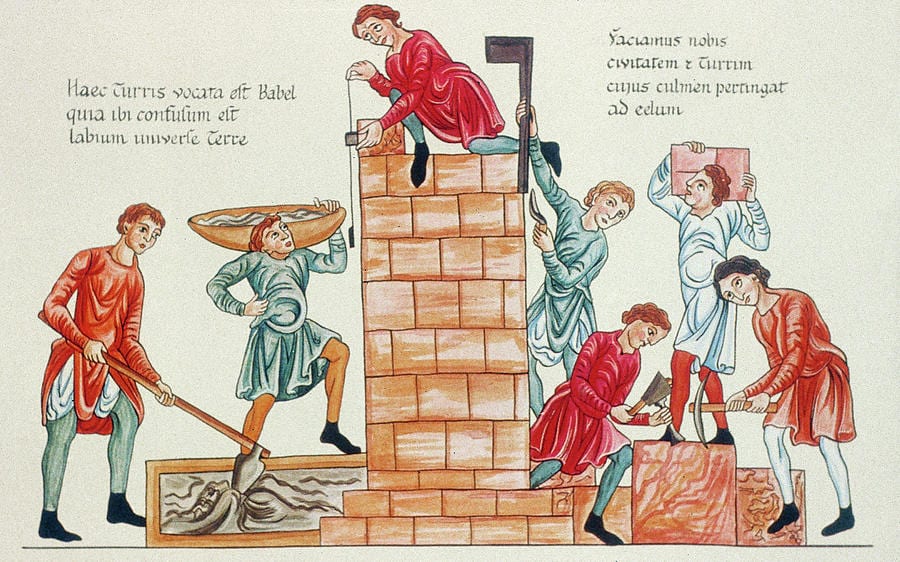
Once requiring at least six months of experience as a self-employed artisan in order to even be considered for the market, the policy is now ‘first come, first serve’.
‘They tend to choose the first people to come knocking at their door — which is something that I find very unjust’, Lupe says.
She believes there is a difference between artisan goods and what she calls ‘arts and crafts’. For her, the town hall’s new approach has resulted in a decline in standards.
While she acknowledges that everyone must find their own way of putting bread on the table, she says she has always moulded her business behind the ideal of perfecting her craft.
‘What makes artisanship special is that it represents the added value of the craft, not the value of the product itself being sold,’ Lupe says.
Despite her sentiments, the line between artisanship and arts and crafts cannot always be so easily drawn.
Associated with the Middle Ages, the term ‘artisanship’ was used to describe those who created products or provided services. The necessary skills were passed down from ‘master’ to ‘apprentice’ over generations, with the goal of maintaining the tools and techniques that made the business unique.
Given this definition, modern-day artisans like Lupe, who are self-taught through the Internet, would effectively be excluded.
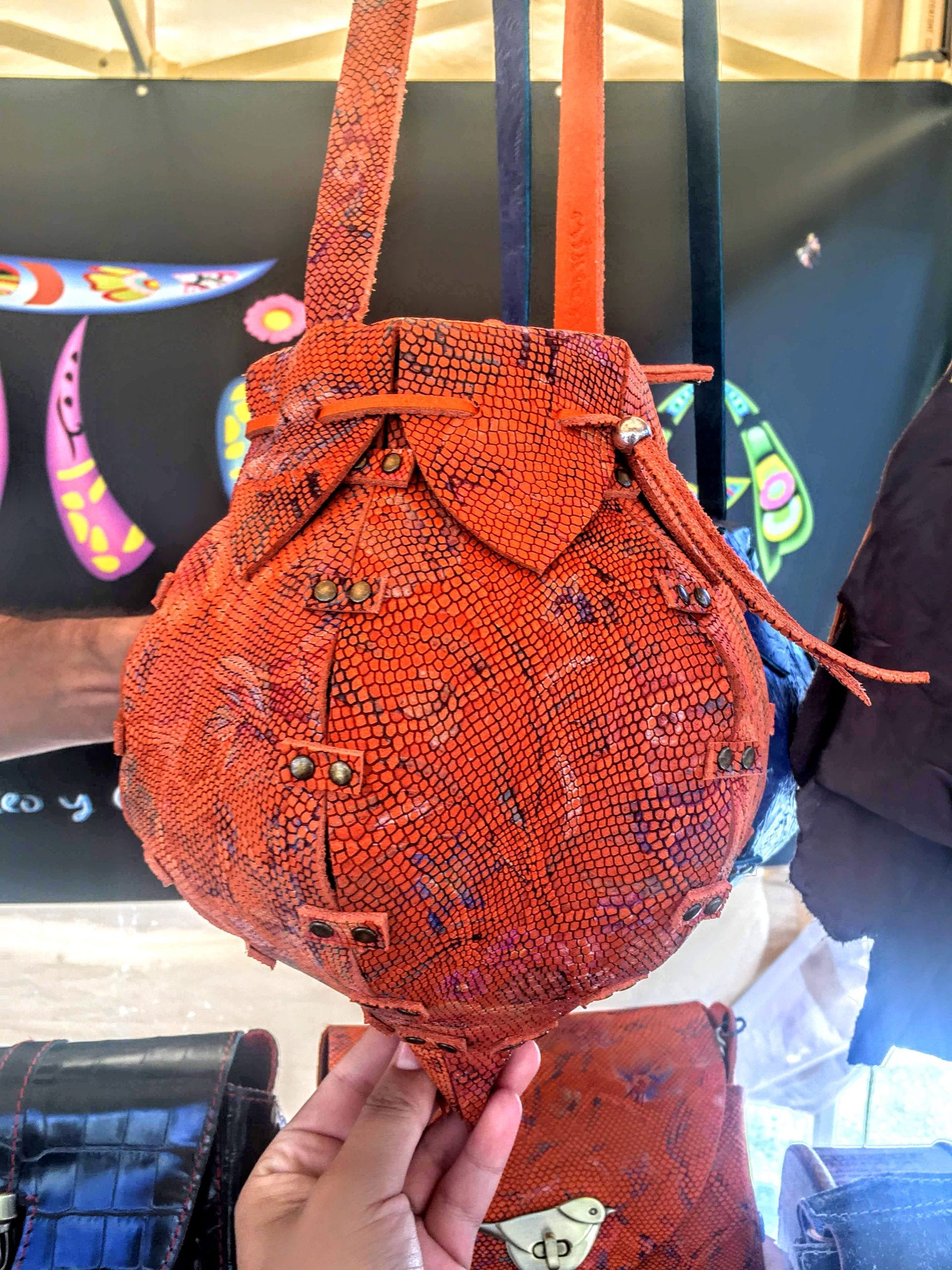
Perhaps it is the Japanese word shokunin which best captures what vendors such as Lupe dedicate their lives to.
According to master woodworker and Japanese shokunin, Toshio Odate, the term for ‘artisan’ includes not just technical expertise ‘but also implies an attitude and social consciousness…a social obligation to work his best for the general welfare of the people, [an] obligation both material and spiritual’.
‘Sometimes I cry when I have to sell my bags’, Lupe laments, motioning towards her rare toad leather purse. ‘They’re like my children’.
When it comes time to leave Lupe’s now-familiar workshop, she calls out to her two real children, telling them to get their swimsuits as they’re leaving for the nearby beach in a few minutes. The kids scramble downstairs, expertly dodging a decorative tree branch and coming to rest in front of a half-painted living room mural. Their shaggy black dog, Silver, joins them.
As a parting gift, Lupe ties a thin leather band with star-shaped embellishments to our wrists — the most memorable creation she has shown us today.






